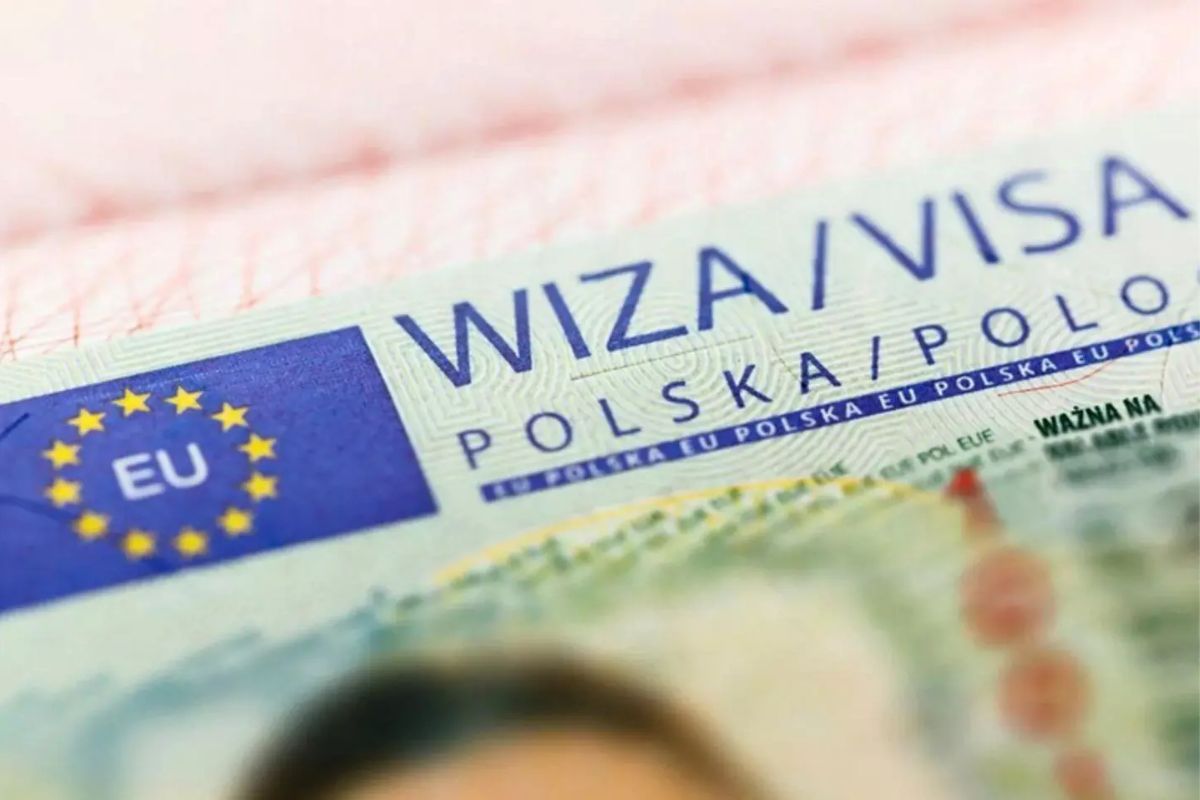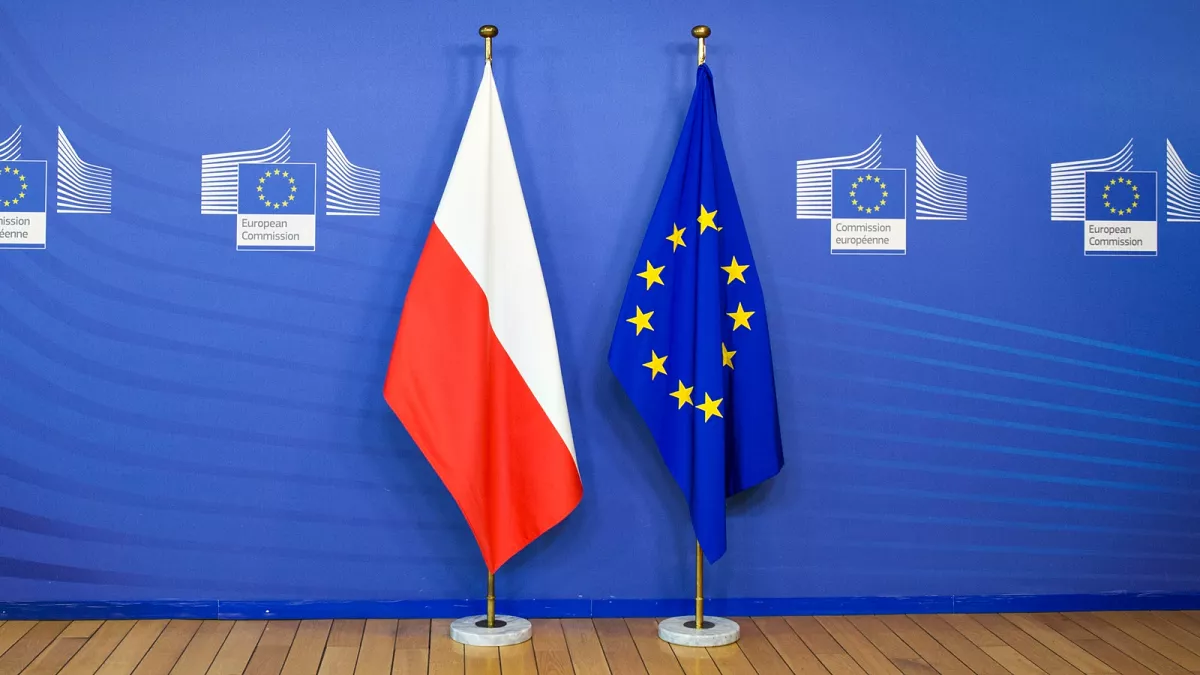Challenges in Obtaining a Polish Visa: A Look at the Most Difficult Nationalities
Poland, located in the heart of Europe, has become an increasingly popular destination for tourists, students, business travelers, and migrants. With its rich cultural history, beautiful landscapes, and growing economy, it is no surprise that people from around the world seek to visit or settle in Poland. In fact, the country is a member of the Schengen Area, which makes it an attractive location for those looking to travel freely within most of Europe.
However, obtaining a visa for Poland can be a daunting task for nationals from certain countries. While Poland is known for processing a significant number of visa applications each year, it is also home to some of the strictest visa policies, particularly for nationals from countries with higher rejection rates. This article explores the nationalities most affected by Poland's visa application process, discussing the factors contributing to the rejections and providing insights into how applicants can increase their chances of success.
Poland's Popularity and the Schengen Visa Process
Poland is an attractive European destination not only for its scenic beauty and vibrant culture but also for its role in the Schengen Area, which facilitates free movement across 27 European countries. As part of the Schengen Agreement, travelers from non-EU countries must apply for a visa to enter Poland if they plan to stay for more than 90 days or engage in activities such as business, study, or tourism.
According to statistics from SchengenVisaInfo, Poland processed 124,057 visa applications in 2023. This number reflects the country’s global popularity and its significance as a travel destination. The country maintains a relatively high approval rate of 85%, meaning most visa applications are successfully granted. However, the remaining 15% of applications were rejected, often due to a variety of factors such as incomplete documentation, fraudulent applications, or applicants failing to meet the criteria for a Schengen visa.
Despite the overall high approval rate, applicants from certain countries are more likely to face rejection than others. This disparity in visa approval rates can be attributed to a number of reasons, including geopolitical concerns, security risks, economic factors, and historical diplomatic relations. Let’s explore which nationalities face the most challenges when applying for a Polish visa and why.
5 Countries With the Highest Visa Rejection Rates
While Poland's visa approval rate remains favorable overall, the rejection rates for certain countries are alarmingly high. The following five countries recorded the highest rejection rates for Polish visas in 2023:
1. Angola
Angola, located in Southern Africa, saw the highest rejection rate for Polish visas in 2023. A staggering 65.63% of visa applications from Angolan nationals were rejected. Of the 805 applications filed, only 276 were approved. The rejection rate was largely attributed to a combination of factors, including incomplete documentation, a lack of ties to the home country, and concerns over potential overstays in the Schengen Area.
Furthermore, Angola had one of the lowest approval rates for multiple-entry visas (MEVs), with only 6.33% of applicants receiving approval for such visas. Multiple-entry visas allow travelers to enter and exit the Schengen Area multiple times within a specified period, but the low approval rate for MEVs from Angola reflects a cautious approach by Polish authorities toward visa applicants from countries with higher risks of visa misuse.
2. Syria
Syria, a country plagued by ongoing conflict, also faces a high rejection rate for Polish visas. In 2023, 60.71% of visa applications from Syria were rejected. Of the 308 applications filed, 187 were turned down. The challenges facing Syrian nationals are largely tied to the ongoing civil war, the country’s instability, and concerns over the potential for refugees to overstay or abuse the Schengen visa system.
The high rejection rate for Syrian applicants is a reflection of Poland's cautious stance toward nationals from war-torn regions, where documentation can be incomplete, and the risk of individuals seeking asylum in the Schengen Area is elevated.
3. Ethiopia
Ethiopia, an East African country, recorded a rejection rate of 54.98% for Polish visa applications in 2023. With 331 rejections compared to 271 approved applications, Ethiopia falls among the top countries with the highest number of rejected visas. The main reasons for the high rejection rate are often linked to insufficient proof of financial stability, unclear travel purposes, and the inability to establish strong ties to the home country.
While Ethiopia is home to many travelers seeking to visit Poland for business or tourism, the lack of reliable documentation and insufficient economic ties make it challenging for many applicants to meet the requirements set by the Polish consulates.
4. Peru
Peru, located in South America, also faces a significant number of visa rejections. With a rejection rate of 51.35% in 2023, Peru saw 38 of its 74 visa applications denied. The reasons behind these rejections are often similar to those faced by applicants from other countries with higher rejection rates, including incomplete documentation, lack of financial stability, and a failure to demonstrate the intent to return to the home country after the visa expires.
Peruvian nationals seeking to visit Poland for tourism, business, or family visits must ensure they have sufficient documentation to prove their financial stability and clear intentions to leave Poland after the end of their trip. The Polish consulate carefully scrutinizes these aspects to ensure applicants meet the necessary criteria.
5. Brazil
Although Brazilian passport holders are exempt from Schengen visa requirements, foreigners residing in Brazil must apply for a visa to visit Poland. In 2023, 50% of visa applications from foreign nationals living in Brazil were rejected. The reasons for these rejections are often related to the inability to meet financial requirements or failure to provide adequate proof of the purpose of travel.
Brazil’s position on this list highlights the challenges faced by non-EU nationals living in the country who need to apply for visas to travel within the Schengen Area. Even though Brazil itself enjoys relatively low rejection rates for Schengen visas, foreign residents face a tougher challenge due to the stringent requirements imposed by Polish authorities.
Countries with the Highest Number of Rejected Applications
While the previous section highlighted the rejection rates, which reflect the proportion of applications denied, another important metric to consider is the total number of rejected visa applications. Some countries may have lower rejection rates but still contribute to a significant number of total rejections simply due to the sheer volume of applications submitted. The following countries had the highest number of rejected visa applications for Poland in 2023:
1. Belarus
Belarus, a neighboring country to Poland, had the highest number of rejected visa applications in 2023. Polish authorities rejected 4,097 visas out of the 35,550 applications filed by Belarusian nationals. Although Belarus had a rejection rate of only 11.52%, the total number of rejections was substantial, primarily due to the large volume of applications submitted. Belarusian nationals are among the highest numbers of applicants seeking to enter Poland, often for business or tourism purposes.
2. India
India, a country with one of the largest populations in the world, recorded 2,288 rejected visa applications out of the 11,954 submitted in 2023. India’s significant number of rejected visa applications is partly due to the large number of applicants, with many seeking to visit Poland for various purposes, including tourism, business, and educational exchanges. Indian applicants must ensure they meet all the necessary requirements, including financial documentation and proof of return plans, to avoid being part of the rejection statistics.
3. China
China, another populous country with a growing middle class, recorded 1,974 rejected visa applications out of the 13,663 filed in 2023. Similar to India, China’s high rejection rate can be attributed to the large volume of applications submitted, combined with the challenges in verifying applicants' intentions and ensuring they meet all of the visa requirements. Applicants from China must provide strong financial backing and solid plans for returning home after their visit to avoid rejection.
4. Algeria
Algeria had 1,325 rejected visa applications out of 3,183 submitted in 2023. While the rejection rate is not as high as other countries on this list, the total number of rejections remains significant. Algerian nationals seeking to visit Poland often face scrutiny regarding their financial resources and their intentions to return to Algeria after their trip.
5. Turkey
Turkey also recorded a significant number of rejected visa applications in 2023, with 1,270 rejections out of 9,510 applications filed. Turkish applicants frequently face challenges in proving their financial stability and their ability to adhere to the conditions of a short-term stay in Poland.
Factors Contributing to Visa Rejections
The reasons behind the high rejection rates for nationals from certain countries are varied and complex. Some of the key factors contributing to visa rejections include:
- Incomplete Documentation: One of the most common reasons for visa rejections is incomplete or insufficient documentation. Applicants must provide accurate and thorough documentation to prove their financial stability, travel plans, and intent to return to their home country.
- Financial Instability: Many applicants fail to meet the financial requirements for a Polish visa. This includes providing bank statements, proof of employment, or other documents that show the ability to support oneself during the stay in Poland.
- Lack of Ties to the Home Country: Applicants who cannot demonstrate strong ties to their home country, such as a stable job, property, or family, are often seen as high-risk individuals who may overstay their visas.
- Security Concerns: Nationals from countries experiencing political instability, conflict, or a history of visa misuse may face additional scrutiny and higher rejection rates due to security concerns.
Conclusion
Poland, as a member of the Schengen Area, continues to be a popular destination for travelers worldwide. However, visa applicants from certain countries face higher rejection rates due to a variety of factors. Nationals from countries with political instability, economic challenges, or insufficient documentation are more likely to face visa denials. To increase the chances of success, applicants must ensure they meet all the visa requirements, provide complete and accurate documentation, and demonstrate their intention to return to their home country after their stay in Poland.
Understanding these trends can help prospective travelers make informed decisions when applying for a Polish visa. By addressing the common causes of visa rejections and providing thorough documentation, applicants can improve their chances of obtaining a visa and enjoying the beauty and opportunities that Poland has to offer.






























0 Comments